-10 F. wake-up temperature yesterday morning in the St. Cloud metro area.
0 F. maximum temperature yesterday in St. Cloud.
21 F. average high on January 4.
25 F. high on January 4, 2016.
January 5, 2012:
Record warmth is felt across the state. Many locations in western
Minnesota soared over 50 degrees, with temperatures reaching the 60s at
Marshall, Canby, and Madison. This was the first record of any 60 degree
temperatures in Minnesota during the first week of January.
Subzero Fun - Happy To Be "Average" Next WeekI
ate so much over the holidays I'm showing up on Doppler radar. Not
happy about that. I was just trying to get up to my "winter weight".
I may lose a pound or two today, just from aerobic shivering.
It's
one of those mornings: clouds of blue smoke at intersections (watch for
black ice!), my car tires feel like they're square, made of concrete.
And I love the way my engine lets out a little scream when I turn the
key. The magic of midwinter in Minnesota!
My weather office looks
like an outtake from "The Walking Dead"; lots of people with colds. The
truth: numbing weather doesn't trigger colds but we're indoors almost
all the time now, exposed to more germs. The flu virus transmits faster
in cold weather and our immune systems slow down. Cue the coughing and
sniffling.
At least the sun is out, but temperatures may not climb
much above 0F today with a wind chill of -25F. But the quality of life
is a 98!
20s above zero will feel good next week; long-range models hinting at 30s within 2 weeks. A little snow is possible
next Tuesday and
Thursday but no newscast-leading drama is in sight.
 Tracking The Cold
Tracking The Cold.
Here is what we woke up to Wednesday morning - air temperatures, not
wind chill; pretty much subzero across the entire state of Minnesota an
the Dakotas - a few minus 20s showing up over the Red River Valley,
where snowcover is deeper. Expect comparable temperatures the next few
nights before temperatures begin to recover over the weekend. Map:
Aeris Maps Platform (AMP)
Why Do People Get Colds in Cold Weather? Here's an excerpt of a good explanation at
Forbes: "...
You’re
outside on an unexpectedly chilly day. You forgot to wear your hat and
gloves and now you’re shivering. Is it a given that you’re going to
catch a cold or come down with the flu? Maybe. Cold weather doesn’t make
you sick, germs do, but research suggests that cold weather can create
conditions that help those germs survive and thrive.
Here, we investigate 5 reasons why you’re more likely to get sick in the colder winter months:
1. You’re indoors more. Being stuck indoors increases your risk of getting sick in a few different ways. Researchers in China and at Virginia Tech
have found students may get sick more frequently when their dorms are
poorly ventilated and lacking humidity. Why? Researchers suspect that
the germs in the droplets from a sneeze are able to survive better in
dry air. It follows that this logic could apply to your cramped office
cubicle, too..."
Recovery.
Hang on. 20s return by Monday; a shot at freezing Tuesday before
cooling off the middle of next week. But a more west to east wind flow
aloft pumps more moderate, Pacific air inland, meaning temperatures
closer to average by mid-January. ECMWF numbers for MSP: WeatherBell.
Incredible Rains.
I don't use "incredible" lightly. GFS guidance prints out over 10" of
(liquid) precipitation for much of central and northern California over
the next 2 weeks, spaced out over 6-7 separate frontal systems pushing
ashore; a steady fire-hose of tropical moisture aimed at the state. This
"atmospheric river" will result in excessive flash flooding, river
flooding, mudslides, road closures and power outages with mountain snows
in excess of 10 feet in some areas. Good news for reservoirs and water
supplies, but the next few weeks are going to be rough. Model data:
Tropicaltidbits.com.
Run For The Hills!
Running may be the best way to get around by Saturday, especially over
the Carolinas, where plowable amounts of snow can't be ruled out from a
southern system. A little ice is possible from Birmingham and Atlanta
to Columbia; the best chance of headline-generating snows from Charlotte
and Raleigh to Norfolk and Chesapeake, Virginia.
Pattern Transition.
By the third week of January winds aloft are howling from the Pacific
Ocean, meaning moderating temperatures across the Lower 48; unusual
warmth returning to the southern USA. We'll see how long this January
Thaw hangs around, but a week to 10 days of relief sounds pretty good to
me.
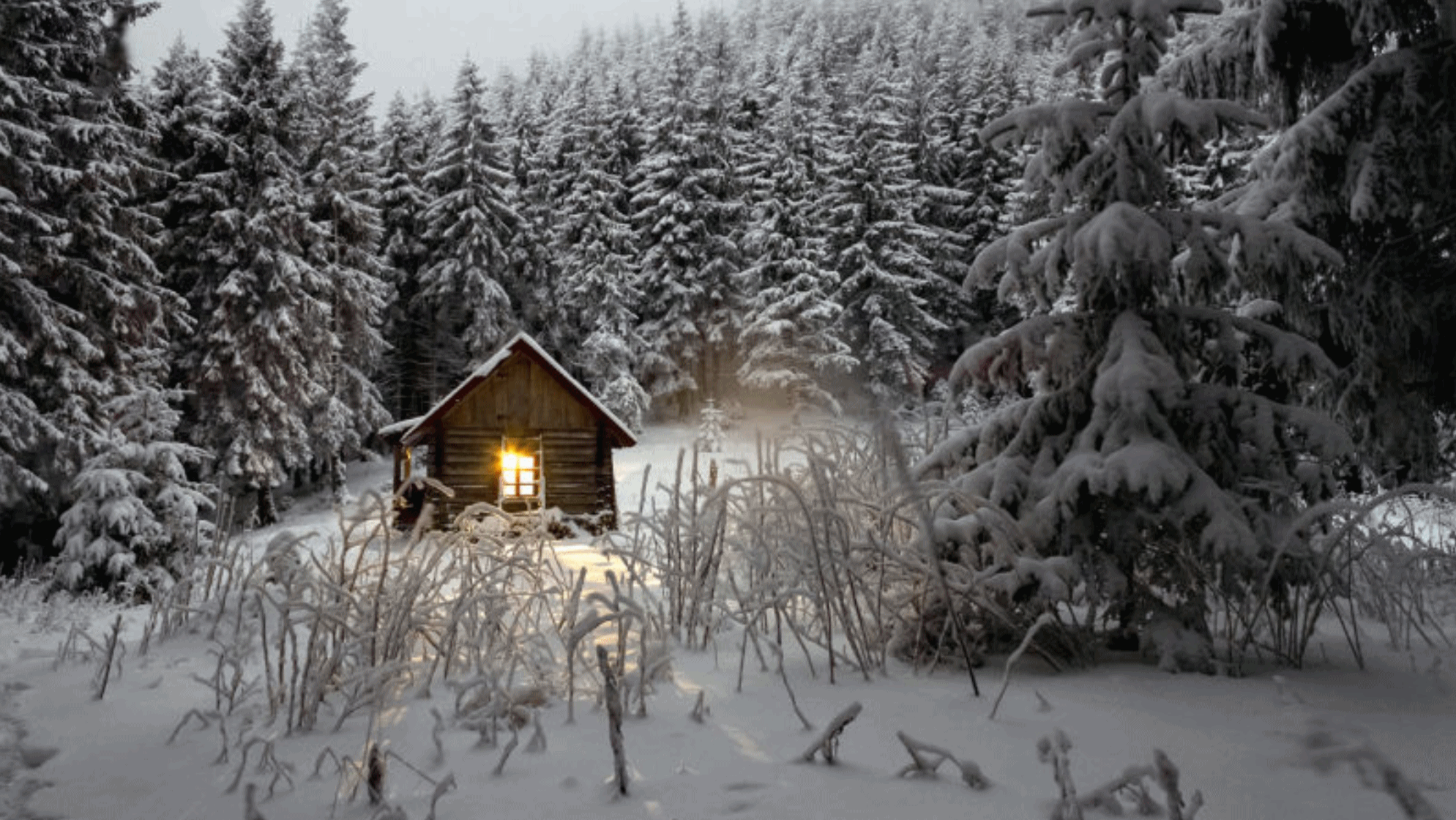 11 Frugal Ways to Deal With Frigid Winter Temperatures
11 Frugal Ways to Deal With Frigid Winter Temperatures. You can do more than dress in layers.
Lifehacker has a few very good tips; things I hadn't thought of in the past. Here's an excerpt: "...
Direct
sunlight tends to warm up a room, so we open the curtains on windows
with direct sunlight shining upon them to let warmth into those rooms
and leave the curtains and blinds closed on other windows. In the
northern hemisphere in the winter, where we live, that means opening the
curtains on the east and south side of the house in the morning, and on
the west and south side of the house in the afternoon and evening, with
all curtains drawn in the middle of the day (as the sun is close enough
to overhead to provide no major benefits)..."
Photo credit: Paul Itkin via Unsplash.
Business As Usual.
This is the kind of day that makes people's eyes get big in other parts
of the USA. Wait, the HIGH was 0? How can that be, they plead? The
atmosphere just ran out of degrees, I respond. There were zero degrees.
Absolute zero. All molecular activity ceases and desists. Pluto-like.
But life goes on in Minnesota. Kids play outside, some crazy guy will
jog past your house later on, dogs still go outside to pee (very
reluctantly, I might add). We are passive aggressive about the cold; we
like to complain about the wind chill, but deep down we secretly relish
this glittering Yukon Bling. Because it pretty much gives us boasting
rights for the Lower 48 - in perpetuity. Those damn mosquitoes are dead
and we don't have to weed the yard. We got that going for us.
File photo: Steve Burns.
A Series of Storms Will Dump Rain and Snow All Across California. Here's the intro to a good overview at
WXshift: "
Californians
are about to hear a phrase that’s been rarely uttered during the
five-year drought that’s dogged the state: atmospheric river. A band of
moisture extending from the central Pacific to the Golden State’s shores
and mountains will bring rain totals measured in feet and snow totals
measured in yards. While it remains to be seen if 2017 is the year that
California’s drought finally becomes a thing of the past, the next week
will provide at least some welcome relief. The storms are already
arriving fast and furious. As of Wednesday, ski areas up and down the
Sierras have seen 3 feet or more of snow. Parts of Oregon’s Cascades
have also been hammered by the first set of storms..."
Animation credit: "
An atmospheric river is sending moisture streaming from the central Pacific to California." Credit:
Cooperative Institute for Meteorological Satellite Studies
What Are "Atmospheric Rivers"?
Glad you asked - you'll be hearing a lot more about them in the media
in coming days. Here's an excerpt of a good explanation from NOAA's
Earth System Research Laboratory: "
Atmospheric
Rivers (ARs) are relatively narrow regions in the atmosphere that are
responsible for most of the horizontal transport of water vapor outside
of the tropics. While ARs come in many shapes and sizes, those that
contain the largest amounts of water vapor, the strongest winds, and
stall over watersheds vulnerable to flooding, can create extreme
rainfall and floods. These events can disrupt travel, induce mud slides,
and cause catastrophic damage to life and property. However, not all
ARs cause damage – most are weak, and simply provide beneficial rain or
snow that is crucial to water supply..."
Loop credit: an atmospheric river event in February, 2015.
Worst Floods in the History of Northern California.
SFgate.com has a photo slide show with highlights of some of the most damaging and deadly flooding in recent decades.
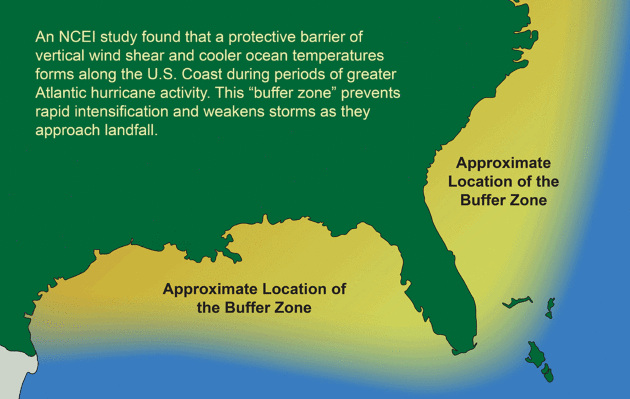
Conditions That Favor More Hurricanes Also Protect U.S., Study Finds. Here's a clip from a
New York Times story: "...
Scientists
say a long-term pattern of climate variability called the Atlantic
meridional mode helps determine the level of hurricane activity. In one
phase, the mode results in warmer surface water in the tropical Atlantic
and less wind shear, or changes in wind speed with altitude. Both
circumstances favor the formation of hurricanes. But at the same time,
conditions near the coastal United States are the opposite: colder
water, which provides less energy to a hurricane, and more wind shear,
which tends to rip a storm apart. So although more hurricanes may form
in the open ocean, as they approach land they are more likely to weaken.
This protective barrier, as Dr. Kossin called it, does not exist in the
Caribbean. In a period of less hurricane activity, the mode shifts and
opposite conditions prevail, both in the ocean and along the coast. That
means fewer hurricanes but a greater likelihood of their intensifying
near the United States..." (Graphic credit:
NOAA).

Periods of Greater Atlantic Hurricane Activity Linked to Weaker U.S. Landfalls. I know, it's a bit counterintuitive, but an article at
NOAA provides more perspective on the new research referenced above: "...
The
absence of the buffer zone had an even greater impact on major
hurricanes. Without it, major hurricanes were two to four times more
likely to intensify and three to six times more likely to intensify
rapidly. This presents major implications for forecasters, as rapid
intensification near the coast is difficult to predict and shortens
public warning time. The period of high Atlantic hurricane activity over
the past 20 years and the accompanying development of the buffer zone
may help explain the present “drought” of major hurricane landfalls in
the United States. The buffer also may have come into play when
Hurricane Matthew headed toward the country. While Matthew’s rains were
devastating for some areas, the buffer zone helped weaken the storm from
a Category 4 as it advanced on Florida to a Category 1 when it
officially made landfall in South Carolina. By keeping higher wind
speeds at bay, the buffer zone likely helped prevent further compounding
damages from Matthew..." (Doppler radar loop: Hurricane Matthew).
The U.S. Had More Floods in 2016 Than Any Year On Record, According To A New Report.
Circa has the details: "
2016
was a historic year in many ways. That includes the weather. There were
19 floods in the United States in 2016, more than any year on record,
according to insurance company Munich Re. That's more than any year
since 1980, when records began. The worst flood was in August in
Louisiana. That flood killed 13 people, destroyed 60,000 buildings and
did $10 billion in damage. It was the worst natural disaster in the
United States since Hurricane Sandy in 2012. 2016 also saw massive
floods in West Virginia,
Maryland and Houston. There was a total of 91 natural disasters in the
United States last year, the second-most on record, and 750 worldwide,
the most in four years..."
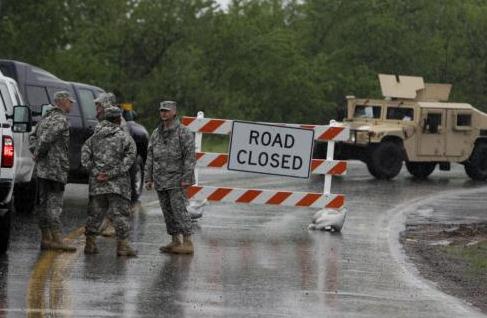 Flood Risks To Increase Along With Severe Storms
Flood Risks To Increase Along With Severe Storms. Here's an excerpt from a post at
NCEL, The National Caucus of Environmental Legislators: "
Shifting rainfall patterns and the amount of water in the ground is raising flood risk in the Northern U.S., according to new research from the University of Iowa. These
changes stem from warming global temperatures that trap more water
vapor in the atmosphere. As a result, scientists found strong evidence
that flooding events will increase in frequency.
Meanwhile, major rainfall events like the one that caused the Louisiana
Flood in 2016 are at least 40% more likely as a result of climate
change, according to a different study by NOAA scientists. That particular event saw rainfall totals of 25 to 30 inches, at least 13 deaths, and an estimated $8.7 billion in damage..."
Extreme Weather Killed Thousands and Cost Billions Across the Globe in 2016. Here's a snippet from
The Washington Post: "...
Historic flooding inundated parts of France and Germany in late May and early June after days of record-breaking rainfall. An upper-level low-pressure system
that formed over central Europe drew warm, moist air from the
Mediterranean northward, and caused days of torrential downpours and
thunderstorms. A record seven inches of rain fell
over the Paris region in May, much of it during the final week of the
month. In central Paris, the Seine River crested more than 20 feet above
normal, the highest level in 34 years.
The Louvre and other museums were closed to visitors to move and
protect valuable artwork from rising floodwaters. Heavy rain also hit
neighboring Germany, where flash floods killed several people in Bavaria as rivers breached their banks and inundated several towns and villages..."
Photo credit: "
The flooded River Seine near the Eiffel tower in Paris is seen on June 3, 2016, after days of almost nonstop rain." (Philippe Wojazer/Reuters).
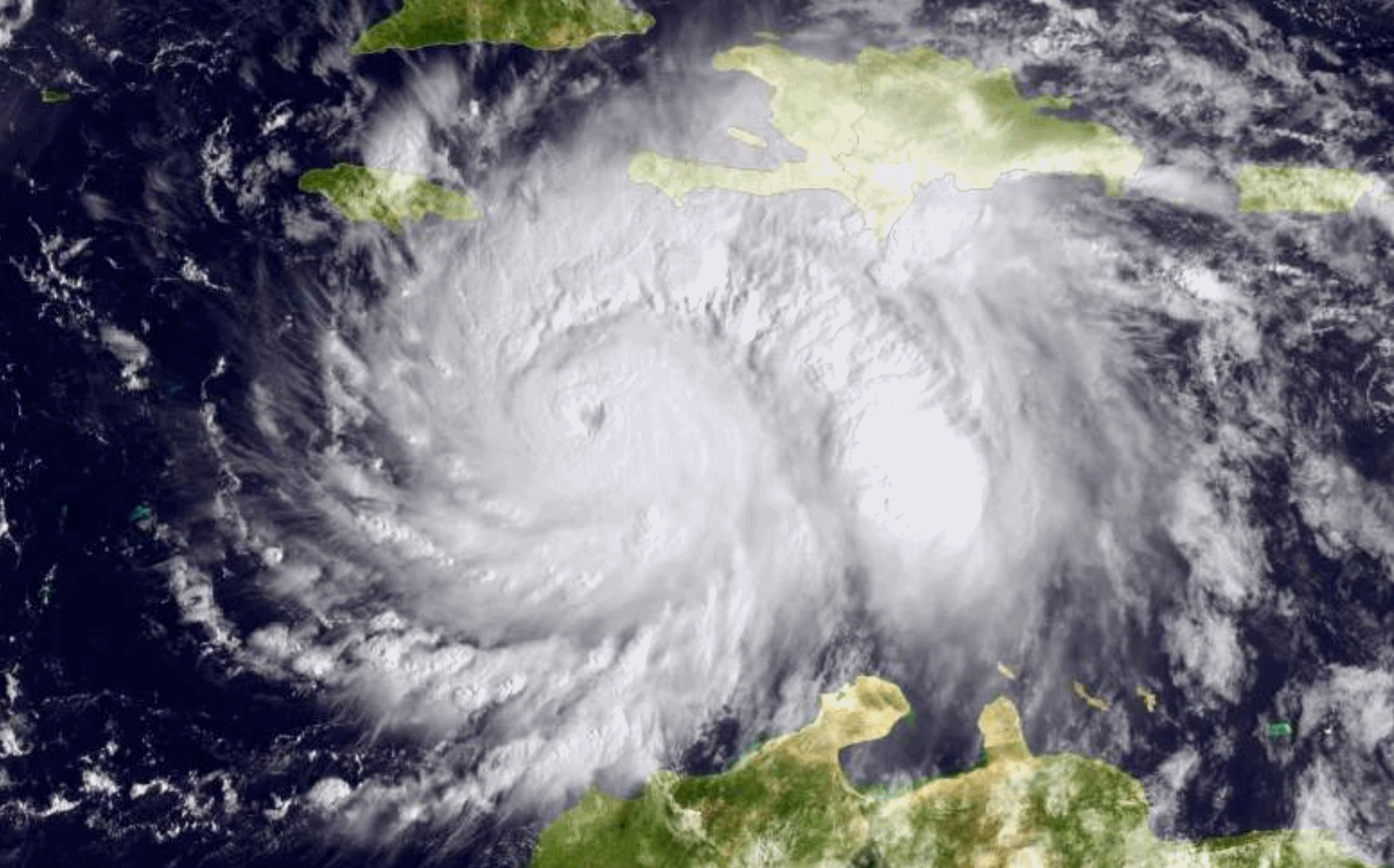 Insurers Paid Out $50 Billion For Natural Disasters in 2016. Reuters reports: "Insurers
paid out around $50 billion for natural disaster claims last year,
almost double 2015's payout of $27 billion, reinsurer Munich Re said in
its annual natural catastrophe review on Wednesday. Earthquakes
in Japan and devastating floods in China - only 2 percent of whose
losses were insured - were the most expensive natural catastrophes of
2016. But the year saw the second-fewest fatalities from natural
disasters in 30 years. Some $125 billion of losses were uninsured.
It was the costliest twelve months for natural catastrophe damage after
three years of relatively low losses, and above the 10-year average of
$45.1 billion..."
File photo of Hurricane Matthew: NOAA.
Insurers Paid Out $50 Billion For Natural Disasters in 2016. Reuters reports: "Insurers
paid out around $50 billion for natural disaster claims last year,
almost double 2015's payout of $27 billion, reinsurer Munich Re said in
its annual natural catastrophe review on Wednesday. Earthquakes
in Japan and devastating floods in China - only 2 percent of whose
losses were insured - were the most expensive natural catastrophes of
2016. But the year saw the second-fewest fatalities from natural
disasters in 30 years. Some $125 billion of losses were uninsured.
It was the costliest twelve months for natural catastrophe damage after
three years of relatively low losses, and above the 10-year average of
$45.1 billion..."
File photo of Hurricane Matthew: NOAA.
There Were a Crazy Number of Record Highs in 2016. Climate Central reports: "2016 will be remembered for many things. One of them will be heat. It was the hottest year on record globally. While the world is still waiting for confirmation of just how high the record
was, there’s a lot of data to digest from the U.S. Nearly every square
inch of the country was dramatically warmer than normal. The blistering
pace of record-high temperatures across the country is the clearest sign
of 2016’s extreme heat. Record-daily highs outpaced record-daily lows
by 5.7-to-1 in 2016, according to preliminary data from the National
Centers for Environmental Information. That’s the largest ratio in 95
years of record keeping. Put another way, 85 percent of extreme
temperature records set in 2016 were of the hot variety..."
Solar, Energy Efficiency Part of Minnesota National Guard Push for Net Zero.
Midwest Energy News
has the story: "
At the Minnesota National Guard’s Camp Ripley base, a
sprawling 10 megawatt solar array is the most visible indicator of the
organization’s commitment to eventually reaching net zero emissions. The
Minnesota National Guard also
has several geothermal systems operating at Camp Ripley and other
facilities. It’s looking to save water and reduce waste dramatically by
composting and changing over to compostable plates and silverware. “Our
long term goal is to generate as much energy as we consume,” said Seth
Goreham, environmental program manager..."
Ford Says Electric Vehicles Will Overtake Gas in 15 Years; Announces 6 New Hybrids, Electric Plug-Ins. Including a hybrid F-150? Wow. Here's an excerpt from
Electrek: "
Ford is making a big announcement
in electrification today. CEO Mark Field confirmed several new models
will receive electric drivetrain options, including its flagship F-150
pickup truck that will double as an on-site generator. In 2015, Ford
announced a $4.5 billion investment in electric vehicles in order to
introduce 13 new models. Today, it confirmed 7 of those 13 new models
and the list will surprise a few: a new all-electric SUV with “at least”
300 miles of range, a hybrid F-150 and a hybrid Mustang, a Transit
Custom plug-in hybrid and 2 new electric police vehicles. If you were
counting, that’s 6 vehicles. The 7th vehicle will be the “high volume”
autonomous car that Ford plans to produce by 2021. Ford confirmed today
the vehicle will be equipped with a hybrid drivetrain..."
Ford to Roll Out New Electric SUV with 300 Mile Range.
Roadshow has more details: "
Ford
today confirmed that one of the 13 new electrified vehicles that it
plans to bring to market by 2020 will be a small, fully electric SUV.
The carmaker says the all-new model will have a driving range of at
least 300 miles. That's a substantial improvement over the 115-mile
driving range of the 2017 Focus Electric,
which is the only fully electric vehicle in the Ford lineup today. If
Ford's new electric SUV delivers on the 300-mile range promise, it will
also better the Chevrolet Bolt,
which has a driving range of 238 miles. Of course, there's no telling
what improvements Chevy will make to the Bolt's battery pack by the time
the new Ford gets here..."
Tesla Aims To Sustain Purity of Car Batteries, But Can Any Company Be Sure? The Washington Post reports: "...
But
the electric-vehicles revolution Musk and others envision depends on an
immense escalation in the world’s capacity to manufacture lithium-ion
batteries, and the race for the raw materials to build those batteries
is creating strains for people and the environment far from Silicon
Valley, a Washington Post investigation has found. The series of Post
stories found that the manufacture of lithium-ion batteries — the power
source for smartphones, laptops and electric cars — is linked to child
labor in cobalt mines in Congo, severe air and water pollution around graphite plants in China and complaints of mistreatment of indigenous communities near lithium deposits in South America..."
Photo credit: "
Panasonic supplies lithium-ion batteries for Tesla vehicles such as the Model S." (Yuya Shino/Reuters)
2016 Was The year Solar Panels Finally Became Cheaper Than Fossil Fuels. Just Wait for 2017.
Quartz takes a look at the trends: "
The
renewable energy future will arrive when installing new solar panels is
cheaper than a comparable investment in coal, natural gas or other
options. If you ask the World Economic Forum (WEF), the day has arrived.
Solar and wind is now the same price or cheaper than new fossil fuel
capacity in more than 30 countries, the WEF reported in December
(pdf). As prices for solar and wind power continue their precipitous
fall, two-thirds of all nations will reach the point known as “grid
parity” within a few years, even without subsidies. “Renewable energy
has reached a tipping point,” Michael Drexler, who leads infrastructure
and development investing at the WEF, said in a statement. “It is not
only a commercially viable option, but an outright compelling investment
opportunity with long-term, stable, inflation-protected returns...”
Photo credit: "
Flying high into 2017."
(Solar Impulse).
The U.S. Spends More on Health Care Than Any Other Country. Here's What We're Buying. The Washington Post has a sobering report - here are a couple of excerpts: "...American
health-care spending, measured in trillions of dollars, boggles the
mind. Last year, we spent $3.2 trillion on health care -- a number so
large that it can be difficult to grasp its scale. A new study published
in the Journal of the American Medical Association reveals what
patients and their insurers are spending that money on, breaking it down
by 155 diseases, patient age and category -- such as pharmaceuticals or
hospitalizations...The analysis provides some insight into what's
driving one particularly large statistic: Within a decade, close to a fifth of the American economy will consist of health care..."
Where is America's Heartland? Pick Your Map. Is it geography or state of mind? The New York Times has a thought-provoking article: "...The
word captures an idea that is more expansive than the Midwest, harder
to map than Appalachia, more evocative than the Great Plains. But now we
are searching for its boundaries, after an election that pundits
proclaimed cast the heartland
against the rest of America. “It’s much more a state of mind than an
actual place,” suggests the historian William Cronon (who teaches in
Madison, Wis., which is surely the heartland, unless your heartland
omits liberal college towns). “It describes a deep set of beliefs about
places that somehow authentically stand for America.” In that sense, the
word is not purely about geography. It’s a value judgment. “Who’s
authentically from the middle? Who’s from implicitly the heart? Who
represents the core?” Mr. Cronon said..."
The 10 Healthiest Places to Live.
I always get a little nervous with these Top 10 lists; so much of this
is subjective, but I was curious to see if my hometown made the cut.
Here's an excerpt from
TIME: "
Honolulu,
Hawaii Best Place for Lifelong Health The heavenly climate helps, but
the key to well-being here also includes enviable health care and a rich
cultural tradition of looking out for one another."
Photo credit: Hawaii Chamber of Commerce.
"Fargo" Wood Chipper. Now here's a conversation-starter.
Atlas Obscura has the details: "
Twenty
years ago, an “Eager Beaver” backyard wood chipper became an accidental
movie icon. In its star-making scene, the chipper is about as grisly as
the Coen Brothers get, sucking down Steve Buscemi’s body parts until
all that’s left is his right foot and bloody gym sock. The Eager Beaver
can now be found tickling tourists and movie fans at the F + M Visitors
Center, just off the interstate on the west side of Fargo. Despite the
gore at the heart of the scene, the prop has been a big hit for the
tourist bureau, who have embraced the movie and the Eager Beaver
wholeheartedly. They’ve even added a mannequin’s leg and gym sock to the
tableau (minus all the blood)..."
This Is What Happens When a Bear Gets Into Your Subaru. There's a (bad) commercial here somewhere, but the video clip highlighted at
The Washington Post is worth a look. It will brighten your day: "
This
story about a bear somehow getting stuck inside a Subaru is what we
need right now. Don’t worry, it ends well: The bear eventually gets out,
thanks to sheriff’s deputies who freed the animal in Jefferson County,
Colo. Annie Bruecker, 17, just got the 2004 Subaru a few months ago and
uses the car to drive to a summer job, she told ABC affiliate KMGH. But she didn’t lock the doors Monday night, which apparently puts you at risk for a bear break-in..."
Image credit: "
Deputies
from Jefferson County Sheriff's Office in Denver freed a bear that was
trapped inside a small car. In the video, one deputy asked, "How did he
get in? I don't see a broken window." (Jefferson County Sheriff's Office).
TODAY: Windchill Advisory. Character-building. Sunny, feels like -25F. Winds: NW 5-10. High: near 0F.
THURSDAY NIGHT: Clear, still not warm. Low: -7
FRIDAY: Some sun, thinking warm thoughts. Winds: SW 5-10. High: 6
SATURDAY: Bright sunshine, feels like -15F. Winds: NW 8-13. Wake-up: -3. High: 5
SUNDAY: Partly sunny, breezy, not as numbing. Winds: S 10-15. Wake-up: -10. High: 15
MONDAY: More clouds, few flurries possible. Winds: NW 5-10. Wake-up: 11. High: 27
TUESDAY: Period of snow, mixing with ice. Winds: SE 10-15. Wake-up: 24. High: 32
WEDNESDAY: Gradual clearing, drying out. Winds: NW 10-15. Wake-up: 18. High: 26
Snowflake samples: NOAA.
Climate Stories...
New Technique Predicts Frequency of Heavy Precipitation with Global Warming. Here's an excerpt from
phys.org: "...
Now
MIT scientists have found that such extreme precipitation events in
California should become more frequent as the Earth's climate warms over
this century. The researchers developed a new technique that preicts
the frequency of local, extreme rainfall events by identifying telltale
large-scale patterns in atmospheric data. For California, they
calculated that, if the world's average temperatures rise by 4 degrees
Celsius by the year 2100, the state will experience three more extreme
precipitation events than the current average, per year..." (File photo: Munich Re).
Paris Climate Deal to Ignite a $90 Trillion Energy Revolution. Here are a couple of excepts from an Op-Ed at The Telegraph: "...
The
fossil fuel industry has taken a very cavalier bet that China, India
and the developing world will continue to block any serious effort to
curb greenhouse emissions, and that there is, in any case, no viable
alternative to oil, gas or coal for decades to come...The old energy
order is living on borrowed time. You can, in a sense, compare what is
happening to the decline of Britain’s canals in the mid-19th century
when railways burst onto the scene and drove down cargo tolls,
destroying the business model. Technology takes no prisoners. Nor does
politics. World leaders have repeatedly stated that they would defend
the line of a 'two degree planet’, and now they are taking the concrete
steps to do so. Fossil investors have been warned..."
Companies Should Report Possible Climate Costs, Say Global Executives. Here's an excerpt from
The Wall Street Journal: "
Companies should publish an assessment of the losses they could suffer through climate change as
part of their routine financial statements, according to a panel of
financial and business executives chaired by Michael Bloomberg. The Task
Force on Climate-related Financial Disclosures, headed by the former
New York City Mayor, in a report Wednesday said that greenhouse gas
emissions pose a serious risk to the global economy and
investors need better information to assess which firms are most
vulnerable to shifting weather patterns and related threats. “What gets
measured better gets managed better,” Mr. Bloomberg said in a letter to
Mark Carney, governor of the Bank of England and chairman of the
Financial Stability Board, a group of global regulators, which
commissioned the 73-page report..."
The Republicans Who Want Trump to Fight Climate Change. Here's an excerpt from
The Atlantic: "...
Like
other members of the eco-right, Inglis believes that efficient markets
are the ultimate problem solver, and he has a general skepticism about
all but the most basic of regulations. “The essence of [the eco-right]
is all about internalizing negative externalities,” Inglis says,
referencing the hidden expenses of carbon’s seepage into the atmosphere.
He says that polluters are “socializing their soot and climate costs.”
By making them pay and stripping out all energy subsidies, the thinking
goes, firms will shift their business models accordingly, weeding out
wasteful fuels, making the Paris Agreement and Obama’s Clean Power Plan
superfluous. “Our view of the Clean Power Plan is that it’s precisely
the worst way to deal with climate change,” Inglis explains. UN
agreements and regulatory pushes, Inglis argues, represent the kind of
policies which keep conservatives out of the conversation on climate,
because they are both too complicated and too confrontational. “I think
the path in is mostly through the business community, where unlikely
partners could really step forward and say, ‘There’s a free enterprise
solution to this. Don’t give us regulations..." (Photo credit above:
Daniel Munoz / Reuters).
Louisiana History Washes Away as Sea Levels Rise, Land Sinks.
NPR has the story: "
Louisiana
is losing its coast at a rapid rate — because of rising sea levels,
development and sinking marshland. Officials are trying to rebuild those
marshes and the wetlands, but much of the coast can't be saved. This
makes Louisiana's history an unwitting victim. As land disappears and
the water creeps inland, ancient archaeology sites are washing away, too..."
Photo credit: "
Louisiana
is losing its coast faster than any place in the world. As land
disappears and the water creeps inland, ancient archaeology sites are
washing away. The roots of a dead oak tree at the edge of an ancient
Native American mound, are all that hold the land together.
" Tegan Wendland/WWNO.
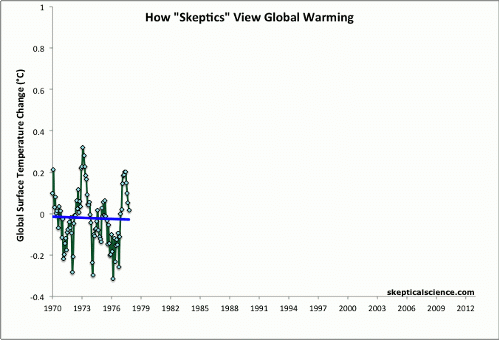 New Study Confirms Faster Rate of Global Warming. Here's an excerpt from Dr. John Abraham at The Guardian: "...This
paper is another reminder why it is so important to invest in the
temperature measurements that are needed to create long-term climate
records. We really need uninterrupted measurements that span many
years/decades if we want to truly understand the Earth’s changing
climate. Even though the costs of making these measurements are very
small compared to what we spend on other less important activities, I am
concerned that the new US administration will decide to pull the plug
on these projects. If that happens, we will be flying blind. Finally,
and for those who read my posts regularly, I am sounding like a broken
record. Global warming is happening, it never stopped, it never paused,
and the models have gotten it right.
New Study Confirms Faster Rate of Global Warming. Here's an excerpt from Dr. John Abraham at The Guardian: "...This
paper is another reminder why it is so important to invest in the
temperature measurements that are needed to create long-term climate
records. We really need uninterrupted measurements that span many
years/decades if we want to truly understand the Earth’s changing
climate. Even though the costs of making these measurements are very
small compared to what we spend on other less important activities, I am
concerned that the new US administration will decide to pull the plug
on these projects. If that happens, we will be flying blind. Finally,
and for those who read my posts regularly, I am sounding like a broken
record. Global warming is happening, it never stopped, it never paused,
and the models have gotten it right..."
The Climate Change Debate: Black People Are Being Left Out and That Can Be Deadly. Is there a fundamental lack of diversity in the green movement? Here's an excerpt from The Root: "...But
the open battle over national environmental policy—certain to hog up
many headlines over the next few years—will find black voters, advocates
and politicians largely absent. Lead environmental advocacy
organizations from the Environmental Defense Fund to billionaire Tom Steyer’s hyped NextGen Climate PAC
are overwhelmingly white either in their staff makeup or in their
leadership. “Without people of color in positions with policymaking
capacity, it means that the perspectives of people of color are less
likely to be included in the deliberations or outcomes,” Tome noted.
Yet, when human-made or human-instigated disasters inevitably hit, black
folks are on the front lines. Bad water in Flint, Mich. Lead poisoning
in an East Chicago project. Historic flash flooding in Baton Rouge, La.
Superstorms along the Northeast. City-flattening hurricanes in New
Orleans..." (Hurricane Katrina file photo: Larry W. Smith, EPA).
2017: Agriculture Begins to Tackle Its Role in Climate Change.
InsideClimate News has the story; here's a clip: "...
Maybe
even a third of greenhouse gas emissions come from the land—more than
transportation—but that wasn't clear until 10 years ago," said Seth
Shames, who leads policy research for EcoAgriculture Partners, a group
focused on hunger, rural poverty and biodiversity. "Those issues started
getting discussed in the climate change community. The forest people
were able to get organized...and there was less political resistance in
the climate world." In response, the UNFCCC launched a program
that pays developing countries to preserve their carbon-absorbing
forests, including standards for measuring, reporting and verifying the
emissions cuts. Similar standards haven't been developed yet for
agriculture..."
Now
MIT scientists have found that such extreme precipitation events in
California should become more frequent as the Earth's climate warms over
this century. The researchers developed a new technique that predicts
the frequency of local, extreme rainfall events by identifying telltale
large-scale patterns in
atmospheric data.
For California, they calculated that, if the world's average
temperatures rise by 4 degrees Celsius by the year 2100, the state will
experience three more extreme precipitation events than the current
average, per year.
The researchers, who have published their results in the
Journal of Climate, say their technique significantly reduces the uncertainty of extreme storm predictions made by standard
climate models.
Read more at:
http://phys.org/news/2017-01-technique-frequency-heavy-precipitation-global.html#jCp
Now
MIT scientists have found that such extreme precipitation events in
California should become more frequent as the Earth's climate warms over
this century. The researchers developed a new technique that predicts
the frequency of local, extreme rainfall events by identifying telltale
large-scale patterns in
atmospheric data.
For California, they calculated that, if the world's average
temperatures rise by 4 degrees Celsius by the year 2100, the state will
experience three more extreme precipitation events than the current
average, per year.
The researchers, who have published their results in the
Journal of Climate, say their technique significantly reduces the uncertainty of extreme storm predictions made by standard
climate models.
Read more at:
http://phys.org/news/2017-01-technique-frequency-heavy-precipitation-global.html#jCp
 The Biggest Clean Energy Advances in 2016. MIT Technology Review has the story; here's an excerpt: "Clean energy made critical strides in 2016. The Paris Climate accords went into effect, the price of solar installations continued to drop, investments in renewable energy soared, offshore wind finally got under way
in the United States, and scientists made a series of technical
advances that promise to make sustainable energy increasingly efficient
and affordable. That last one is key, since invention is still the
surest way to avoid the greatest impacts of climate change. Today's
commercially available renewable technologies can't meet all of the
world's energy demands, even if they're scaled up aggressively. The
United States comes up about 20 percent short by 2050, according to a thorough analysis by the National Renewable Energy Laboratory. Meanwhile, the U.N.'s Intergovernmental Panel on Climate Change concluded
the world must cut greenhouse gas emissions by as much as 70 percent by
midcentury, and to nearly zero by 2100, to have any chance of avoiding
warming levels that could ensure sinking cities, mass extinctions, and
widespread droughts
The Biggest Clean Energy Advances in 2016. MIT Technology Review has the story; here's an excerpt: "Clean energy made critical strides in 2016. The Paris Climate accords went into effect, the price of solar installations continued to drop, investments in renewable energy soared, offshore wind finally got under way
in the United States, and scientists made a series of technical
advances that promise to make sustainable energy increasingly efficient
and affordable. That last one is key, since invention is still the
surest way to avoid the greatest impacts of climate change. Today's
commercially available renewable technologies can't meet all of the
world's energy demands, even if they're scaled up aggressively. The
United States comes up about 20 percent short by 2050, according to a thorough analysis by the National Renewable Energy Laboratory. Meanwhile, the U.N.'s Intergovernmental Panel on Climate Change concluded
the world must cut greenhouse gas emissions by as much as 70 percent by
midcentury, and to nearly zero by 2100, to have any chance of avoiding
warming levels that could ensure sinking cities, mass extinctions, and
widespread droughts..."
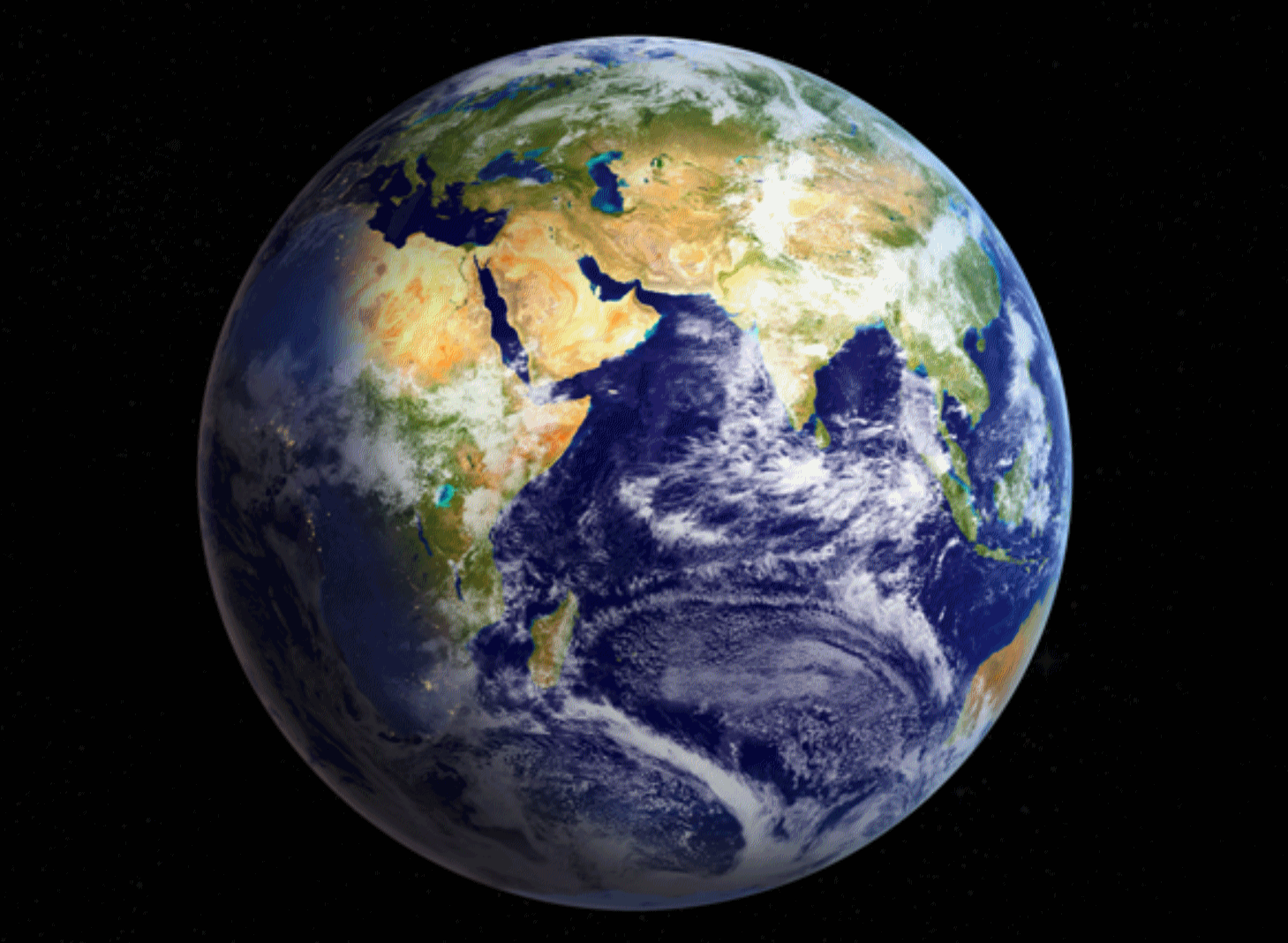 The Free-Market Case for Climate Science. Here's an excerpt of an Op-Ed at Bloomberg: "...There’s reason to think the evidence for human-caused climate change is prevailing
in the economic marketplace, as well: Property insurers and other
profit-maximizing businesses with a substantial financial stake in the
concept are taking actions that demonstrate they believe the evidence.
They are working to create more accurate models of climate change and to price climate risk into insurance programs, even threatening lawsuits
against actors who do not try to limit ongoing climate change. As we
say in economics, revealed preferences are more convincing than stated
ones. Fundamentally, the concept of human-caused climate change has won
out because alternative views -- including arguments that the theory is a
hoax spread by anti-growth and anti-technology Jeremiahs -- contradict
what competitive markets are demonstrating. In the end, then, it is
inconsistent to simultaneously accept that markets are powerful ways to
allocate goods and services in the economy and also deny that human
activity is causing substantial climate change
The Free-Market Case for Climate Science. Here's an excerpt of an Op-Ed at Bloomberg: "...There’s reason to think the evidence for human-caused climate change is prevailing
in the economic marketplace, as well: Property insurers and other
profit-maximizing businesses with a substantial financial stake in the
concept are taking actions that demonstrate they believe the evidence.
They are working to create more accurate models of climate change and to price climate risk into insurance programs, even threatening lawsuits
against actors who do not try to limit ongoing climate change. As we
say in economics, revealed preferences are more convincing than stated
ones. Fundamentally, the concept of human-caused climate change has won
out because alternative views -- including arguments that the theory is a
hoax spread by anti-growth and anti-technology Jeremiahs -- contradict
what competitive markets are demonstrating. In the end, then, it is
inconsistent to simultaneously accept that markets are powerful ways to
allocate goods and services in the economy and also deny that human
activity is causing substantial climate change..."
File image: NASA Earth Observatory.
The Station Scientist's Responsibility to Report on Climate Change.
Because climate volatility is already showing up in weather disruption
around the world; it's turning up the dial, especially on heat, intense
rainfall events and Pacific cyclones. Here's an excerpt from Miami TV
meteorologist (and friend) John Morales at
WXshift: "...
In
certain cities and states, the percentage of the audience that may be
“offended” by climate change information is significant. Broadcast
meteorologists know that their bosses experience varying degrees of
nervousness – fear – about the potential impact to viewer ratings from
an “unpopular” climate change presentation. But as we have advanced
further into the 21st century, the effects of climate change have become
undeniable. Weather presenters – even in America – are seeing many more
opportunities to discuss climate on the air. When done right, there is
little chance that anyone will be “offended.” I have found that the best way
to do it is to always tie-in climate change to an ongoing event. So,
for example, if there’s excessive rainfall in Florida, I will discuss
the details of the event and always remind the audience that the
propensity for heavier rainfall is increasing as the world warms..."
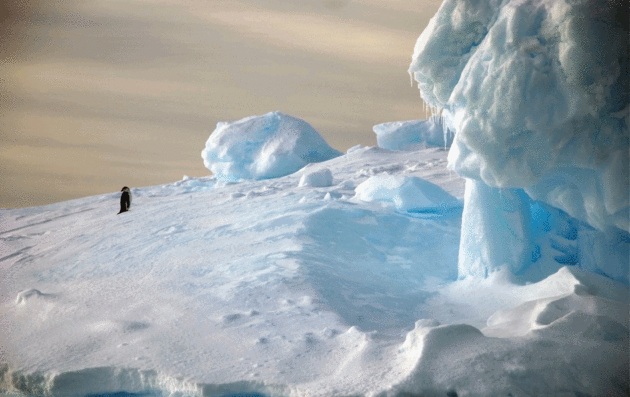
Best Environmental Stories from 2016. Here's an excerpt from Pacific Standard: "I
think we can all agree, things really went off the rails in 2016.
Environmentally, it was a year of extremes. It is more likely than not
to be the hottest year on record, and yet, global fossil fuel emissions flattened. Wildfires torched tens of thousands of acres across the United States in one of the longest and largest fire seasons on record, and the Paris Agreement entered into force. Storms that should only happen every 500 years became increasingly common, and the Army Corps of Engineers denied permits for the Dakota Access pipeline pending a thorough environmental impact study. A noxious bacterium re-emerged from thawing permafrost, and, oh yeah, Americans elected a climate denier
into their country’s highest office. It is becoming increasingly clear
that this planet is rapidly approaching a tipping point. “If we lose
this moment for action, there’s no speech decades from now that will put
these massive ice sheets back together,” Secretary of State John Kerry said
at COP22 this year in Marrakech. “There’s no magic wand in any capital
in the world that you can wave to refill all of the lakes and rivers
that will dry up, or make farm — arid farm land fertile again. And we
certainly won’t have the power to hold back rising tides as they
encroach on our shores. So we have to get this right, and we have to get
it right now...”
Photo credit: "A
chinstrap penguin surveys his domain near the shore of the Antarctic
Peninsula. Some penguin species have already been displaced by the
decline of ice in the region, and many populations will lose habitat in
the decades ahead." (Photo: Bob Berwyn).
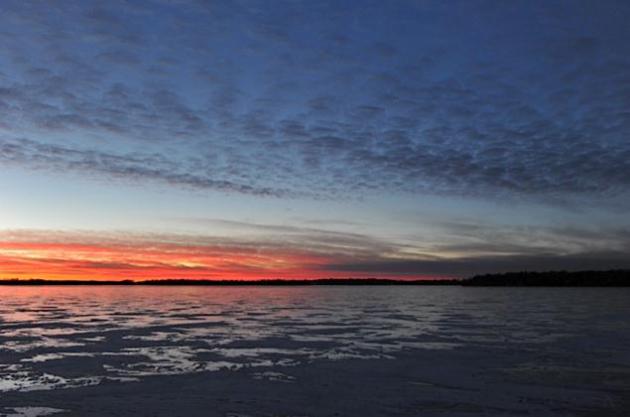

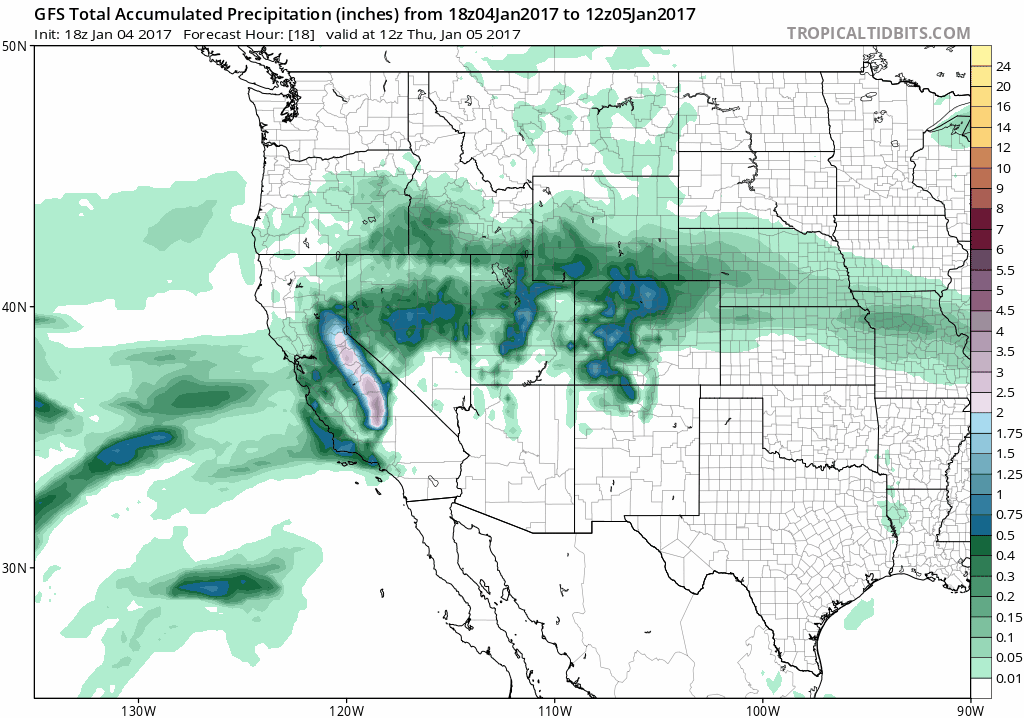
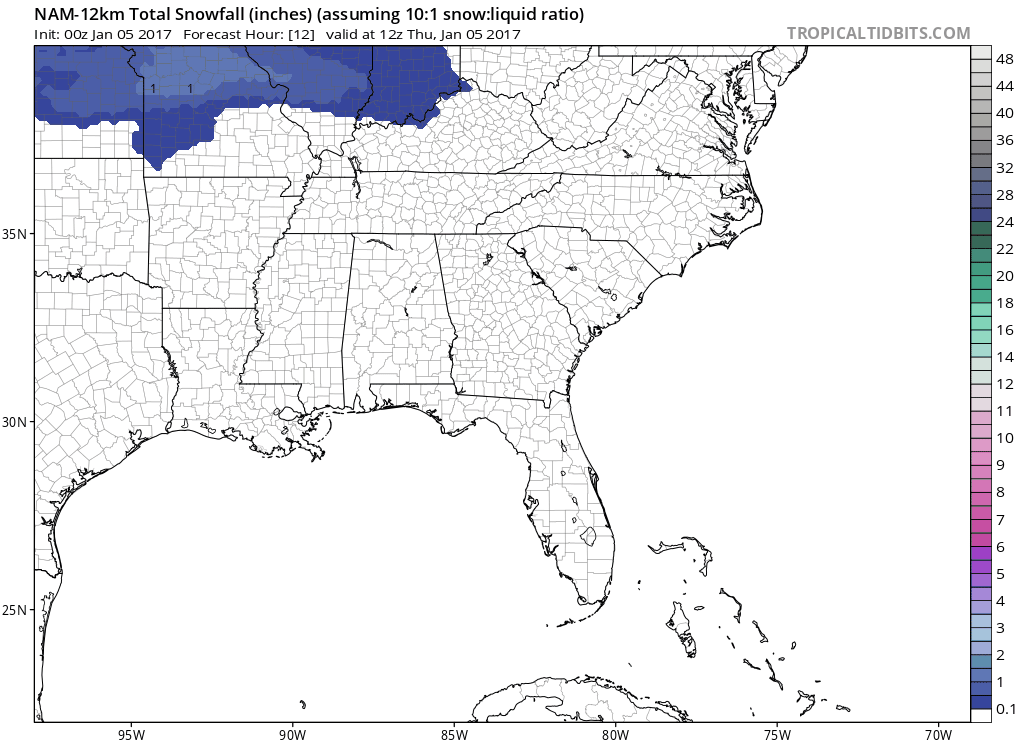

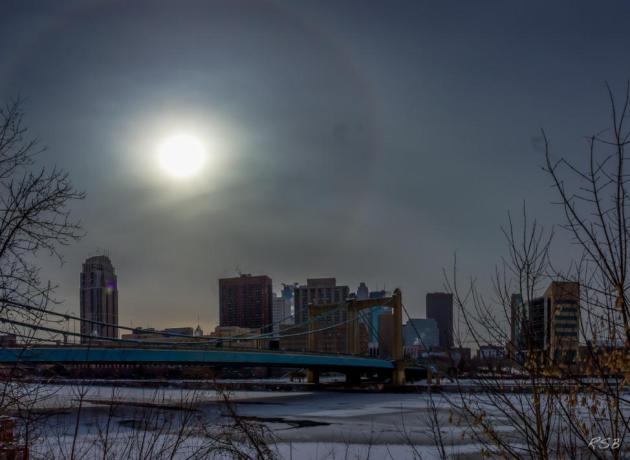

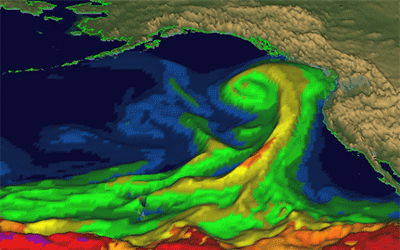


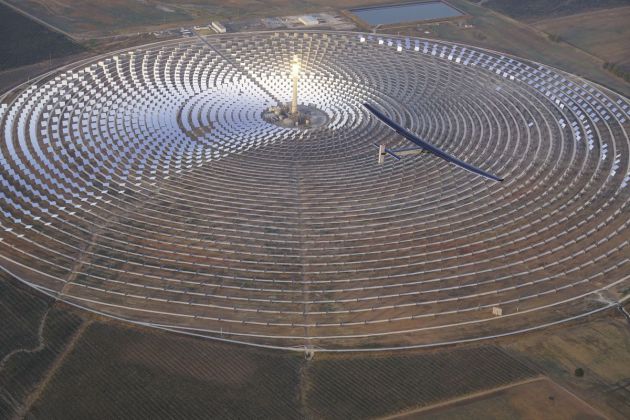
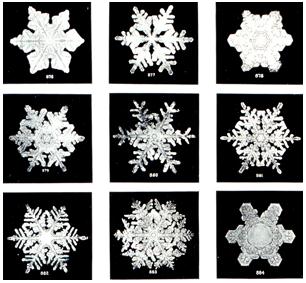
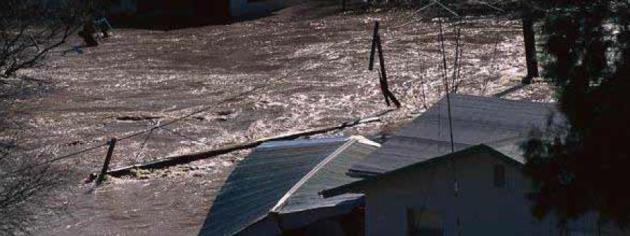




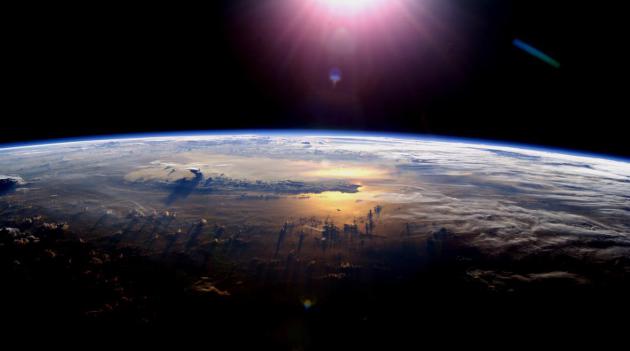
No comments:
Post a Comment